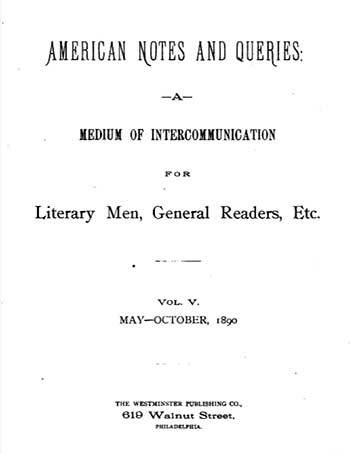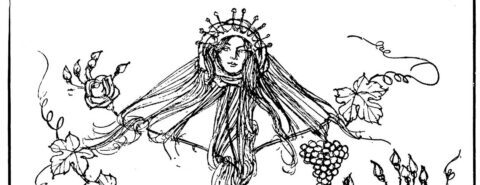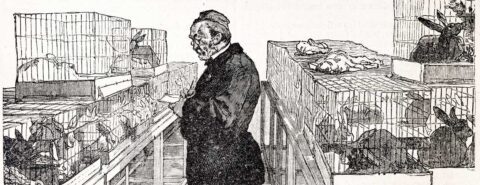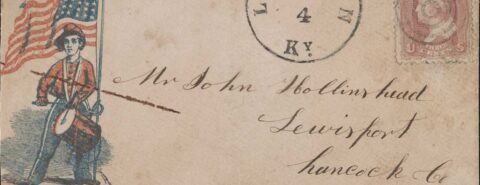Oxford University Press's Blog, page 42
October 6, 2023
The three empires of our digital world [infographic]

The three empires of our digital world [infographic]
Today, there are three dominant technology, economic, and regulatory powers that can be viewed as digital empires, each with the ambition and capability to shape the global digital order towards their interests and values. Each jurisdiction also holds a different vision for the digital economy, which is reflected in the regulatory models they have adopted. The US has pioneered a largely market-driven model; China a state-driven model; and the EU a rights-driven model. Exploring the nuances and different values undergirding each of these models helps understand conflicts that are unfolding and others that will likely come.

The US, China, and the EU are exporting their domestic regulatory models in an effort to expand their respective spheres of influence, pulling other countries into the orbits of the American, Chinese, or European digital empires. The US’ global influence today manifests through the dominance of its tech companies that exercise private power across the global digital sphere. China’s global influence can be traced to its infrastructure power, where Chinese firms—all with close ties to the Chinese state—are building critical digital network infrastructures in countries near and far. The EU exercises global influence primarily through regulatory power that entrenches European digital norms across the global marketplace. These modes of influence have ingrained American private power, Chinese infrastructure power, and European regulatory power deep into the economic, physical, and legal foundations of foreign societies. Which digital empire will prevail in the contest for global influence remains an open question, yet their contrasting strategies are now increasingly clear.
Digital societies are at an inflection point. In the midst of unfolding regulatory battles, governments, tech companies, and digital citizens are making important choices that will shape the future ethos of the digital society. It is crucial that we all understand the choices we face as societies and individuals along with the forces that shape those choices, and the immense stakes involved for everyone who uses digital technologies.
Featured image by Kevin Crosby on Unsplash (public domain)
October 5, 2023
Much attacked, still standing: how the international legal order is attacked and defended

Much attacked, still standing: how the international legal order is attacked and defended
The invasion of the Russian Federation in Ukraine on 24 January 2022 is certainly not the first, but one of the most blatant attacks on the international legal order and one of the order’s foundational values, namely peace. It has enlivened widespread debates about the end of the liberal world order and, closely related to this, a crisis of international law. But what does this crisis stand for? Does it indicate that a foundational transformation of international law is underway? Or can the international legal order be defended against this and other attacks?
Tracing Value Change in the International Legal Order. Perspectives from Legal and Political Science brings together scholars of international law and international relations to assess these developments through an interdisciplinary exchange. The authors examine the fate of foundational norms of the post-1945 order and of norms representing a widely perceived rise of the international legal order post-1990. These norms include the prohibition of torture, the protection of women’s rights, the prohibition of the use of force, the nonproliferation of nuclear weapons, the value of precaution in sustainability norms, and the anti-impunity norm advanced by the ICC.
Given that international law has always dealt with the tension between maintaining the status quo and adapting to a changing world, we first need to distinguish incremental change from a profound transformation. Methodologically, such a distinction can be built on an assessment of whether essential characteristics of international law are currently changing. Thus, we argue that a foundational paradigm shift occurs if the values protected by international law change in substance or in legal or social validity. Such an interdisciplinary understanding of norm change allows us to transgress the traditional binary legal thinking, to take into account social processes that alter the context in which legal norms operate, and to grasp gradual processes of norm erosion.
“An interdisciplinary understanding of norm change allows us to transgress the traditional binary legal thinking.”
First, legally protected values might not change in the formal sense but lose their social validity and thus their power to structure actors behavior. This dimension acknowledges that international norms, understood as social expectations by social scientists, overlap with, but are not identical to, legally codified norms. A current example is the prohibition to use and transfer cluster bombs. On the one hand it is a legally codified norm, on the other a shared social expectation to ban the use of this type of weapon for its detrimental humanitarian impact. While both overlap, they are not identical. As a shared social expectation the norm is even affecting non-parties to the 2008 Convention on Cluster Munitions, i.e., parties that are not bound by the norm in the legal sense. The contributions to our book observe social validity decline for the prohibition of the use of force, where the historically restrictive reading of Article 51 UN-Charter regarding “the inherent right of individual and collective self-defense if an armed attacks occurs” has come under attack after 9/11. Another case in point are women’s rights where a social validity decline occurs due to conservative actors’ successfully hollowing out gender equality norms by means of counterframing techniques or symbolic compliance.
Second, the degree to which a value is legally protected may change (legal validity decline). This category captures, inter alia, cases of erosion or shifting prioritization of values. Our authors identify indications for such an erosion of the value of accountability in relation to certain practices concerning the ICC. Third, a legally protected value may change substantially. Due to processes of fragmentation the value of precaution seems to undergo substantial value change. Still, in view of inherent resilience mechanisms and high hurdles for legal change, many of the norms and their underlying values analysed in our book have so far proven to be robust to change with the most prominent example of the prohibition of torture.
“The role of norm defenders is vital: robust norms have been defended by legal institutions, key states, and non-state actors who uphold normative expectations.”
Why are some values more prone to change than others? We studied various attacks of and challenges to foundational values of the international order. These included different types of contestation, such as discursive versus behavioral forms or reactive versus proactive types, often encouraged by a spread of populism and autocratic regimes, changing geopolitical power constellations, transnational crises, and technological change. While the type and intensity of contestation certainly matter, we also find that the role of norm defenders is vital: robust norms have been defended by legal institutions, key states, and non-state actors who uphold normative expectations. Furthermore, legal and institutional structures reinforce norms, for instance by stabilizing legal opinion, legitimizing the claims of norm defenders, or denouncing non-compliance. Here, the systemic and autopoetic character of the international legal order contributes to the robustness of legally protected values.
A core question is which side is willing to invest costs and time for attacking or defending norms and their underlying values. The book finds that the magnitude and frequency of non-compliance with and contestation of legally protected values have grown significantly. It also notes the trend to restrict NGOs from promoting and defending international norms and the trend to delegitimize international courts and other institutions. If this trend continues, a foundational change of the international legal order might be unstoppable.
Featured image: Alexandra Nicolae via Unsplash, public domain.
October 4, 2023
Some hopelessly obscure words: the case of cowan

Some hopelessly obscure words: the case of cowan
Some words don’t interest anyone. They languish in their obscurity, and even lexicographers miss or ignore them. Yet they too deserve to get their day in court. One such word is cowan “a man who builds dry stone dikes and walls; not a freemason, one who is outside the brotherhood; an amateur, a bungler.” Cowan, we are informed, is invariably used “in conjunction with eavesdropping in a formula addressed to the tyler of a lodge of Freemasons” (but see below!). The meaning of tyler is never discussed. Surprisingly, cowan has been known from texts since the end of the sixteenth century, and those who define it seem to agree that it is Scottish, but no etymology has been proposed by the few modern dictionaries that mention it. Likewise, searching for cowan online produces no results.
The route of the word seems to be clear: from “second-rate mason” (because he does not use mortar?) to “an outside free mason,” and finally to “bungler.” But it is not unimaginable that the development went in the opposite direction: from an early Modern English slang word cowan denoting a bungler or worse to the lingo of masons. I have once experienced a rather rude brushoff with the language of masonry and feel insecure (once bit, twice shy). See my blog post “Unable to put a kibosh on a hard word” (19 March 2010), in which I discussed the term kibosh “cement,” which either exists or does not. Cowan will probably end up in the same dark hole.
 A dry stone dyke.
A dry stone dyke.By John McMillan via Geograph (CC BY-SA 2.0 DEED)
One wonders why such an innocuously looking term lacks an etymology, especially because the origin of coward and cow (verb), let alone the animal name cow, has been investigated with great success. The reason I am writing this blog post is simple. In the periodical American Notes and Queries for the summer of 1889, cowan was discussed at some length (the exact references will be found in my 2010 book A Bibliography of English Etymology). The suggestions, though not particularly inspiring, may present some interest, because it always pays off to look at all conjectures and opinions. What if a wrong association will inspire a better one or point to a more promising direction of research? John Jamieson’s great Dictionary of Scots, the OED, Joseph Wright’s The English Dialect Dictionary, and The Century Dictionary feature the word, but Webster’s predecessors, Webster himself, and his nineteenth-century revisers missed it. Except for Jamieson, no one (that is, James A. H. Murray, Joseph Wright, and Charles P. G. Scott) ventured an etymology.
Below, I’ll summarize what I read in the 1889 exchange. Jamieson, we are reminded, traced cowan to Swedish kufa “to suppress.” There is no way from this Swedish verb to a sixteenth-century English noun. I may also mention Swedish kuf “a crank” and kufisk “eccentric,” apparently, a piece of Uppsala late nineteenth-century student slang. Another hopeless idea occurred to Charles Mackay, a good poet and the producer of the most bizarre (a Swede might say kufisk) etymologies: he believed that most English words go back to Scottish Gaelic. Yet Mackay cited the root of Greek akoúō “to hear”(along with Scottish Gaelic cū) and even English to cow, to cower, and the noun coward. It is useful to cite those derivations, to get them out the way. Only the Greek root might deserve some consideration, as long as cowan is connected with eavesdropping, but how could a garbled Greek verb become a late English noun?
 An eavesdropper, not a cowan.
An eavesdropper, not a cowan.“De luistervink” by Nicolaes Maes via Wikimedia Commons (public domain)
However, Mackay also mentioned French coyon (a term of abuse, with obvious sexual connotations), which he derived from the same Greek noun. French coyon, Italian coglione, and their cognates are ultimately related to Greek koléos “vagina” (French couille “balls” belongs here too). If cowan originated in French and is a garbled version of a Common European vocabulary of swear words, Mackay’s etymology might be considered, though the phonetic match coyon ~ cowan leaves something to be desired. More important, this derivation presupposes that the word did not originate among masons (a development, mentioned as possible above). The author or compiler of the Ritual of Free Masonry, published in 1835 (as stated by M. C. L. on p. 118 of the aforementioned volume of American Notes and Queries; I wish I knew who this well-informed man from New York was!), also says that cowan is of French origin and that it was once written chouan. Chouans are rather famous figures in French history. Yet they seem to have nothing to do with cowans. Moreover, cowan was never spelled chouan. The idea that cowan is a variant of chouan has no foundation in fact.
Equally fanciful is the suggestion that since cowans were eavesdroppers, the word cowan goes back to French écouter. Once again the sounds do not match. Though M. C. L. favors this derivation, it has nothing to recommend it. As a final flourish, I’ll quote the following passage: “The sword is placed in the hands of the tyler, to enable him effectually to guard against all cowans and [!] eavesdroppers, and suffer none to pass or repass but such as are duly qualified.”
 American Notes and Queries, a cousin of the famous British biweekly Notes and Queries.
American Notes and Queries, a cousin of the famous British biweekly Notes and Queries.Via the Internet Archive (public domain)
Here are some points perhaps worthy of note in connection with the word cowan. This noun gained some currency from the professional lingo of masons, in which it carried negative connotations, but masons may have borrowed it from the international slang of artisans or some criminal elements. There is probably no need to look for the origin of cowan in the technical lingo of masons. However, the association between cowan and masonry was so strong that freemasons appropriated the term for their practices. The use of the conjunction and in the above quotation (cowans and eavesdroppers) should not be overlooked: we may conclude that cowans were not or at least not predominantly eavesdroppers. If so, attempts to trace cowan to some word related to listening should be abandoned. Cowan may perhaps be a borrowing from French, but the source (if it indeed existed) has not been discovered. Coyon is not a bad match. However, the route from a swear word with opprobrious connotation to “outsider” poses problems. Finally, one wonders why the word is predominantly Scottish. Perhaps this inconclusive essay will inspire someone to go further.
My schedule for the coming week will prevent me from working on the next post, so that we will meet in what in British English is called a fortnight. If by that time I receive a sufficient number of questions and comments, I may produce a post devoted to traditional gleanings. So far, I have heard only from one of our correspondents, who cited a thought-provoking Hittite parallel to English squash, and questions about the origin of god and (!) deuce.
Featured image by denisbin via Flickr (CC BY-ND 2.0 DEED)
October 3, 2023
Found in translation: how the amateur translator brought Asian classics to a 19th century audience

Found in translation: how the amateur translator brought Asian classics to a 19th century audience
Today, translation is a professionalized activity closely linked to the publishing industry. Identifying a foreign-language text that appears suitable for its list, a publisher commissions a translator to produce an English version in return for a fee, and the resulting manuscript is subject to editorial intervention and input from the marketing department prior to publication. For most of the nineteenth century, however, this organized chain of production had yet to be established. Instead, it was typically the translator who embarked on a project according to their own whims and preferences, and who subsequently submitted the manuscript, unsolicited, to the publisher.
The people who submitted these manuscripts were representative of their era. The majority of nineteenth-century translators were not formally qualified and did not see their activity as a full-time job. For them, translation was just one among a range of literary pursuits, undertaken more frequently for recreation than remuneration—practised often, in fact, in a thoroughly leisurely or desultory manner. One such noteworthy dilettante was the poet and recluse Edward Fitzgerald, who translated quatrains or ruba’i from Persian while sauntering in the fields near his Suffolk home. The Rubaiyat of Omar Khayyam would ultimately make his name famous around the English-speaking world, but he originally published it anonymously, entirely indifferent to worldly success.
“For the majority of nineteenth-century translators, translation was undertaken in a leisurely or desultory manner.”
Similarly amateurish, yet actuated by quite different motives and financial pressures, were self-styled “popularizers” whose business it was to make various branches of specialist knowledge, including foreign literature, accessible to the general public. Popularizers flourished in an era of increasing literacy and cheap print, and were celebrated by the influential critic and social commentator, Matthew Arnold, for disseminating cultural capital “outside the clique of the cultivated and learned.”
A little-known fact is that the first person to translate Omar Khayyam into English was not Edward Fitzgerald, but Louisa Stuart Costello, an Irishwoman who turned her hand to various forms of writing to support her widowed mother. Her 1845 anthology of lyric poets, The Rose Garden of Persia, was rendered not from the original Persian but from translations published by professional orientalists in France and Germany. Taking their work, she glossed or removed obscure phrases or allusions, abridged long texts, and offered brief accessible biographies for each poet in her anthology. She also “versified” their prose translations of Persian lyric, turning the text back into poetry (but using metres and rhyme schemes recognizable in 1840s Britain).
Such recycling of technical or specialist publications for the general audience was a common phenomenon, and one particularly interesting to observe in regard to Asian languages. This field of translation was characterized by an especially sharp contrast between a large and active body of popularizers, and the surprisingly small community of professional orientalists, who lacked the numbers and the clout to prevent interlopers grazing on their turf. This was sometimes a source of bitter resentment. E.B. Eastwick, Professor of Hindustani at the East India Company’s training college, was outraged to see the public “batten on such scraps of Orientalism as Miss Costello’s ‘Rose-Garden’.” While such a concoction might please the ignorant, Eastwick went on, “the Eastern scholar” (his italics) would find it utterly unsatisfactory. But such readers had never been Costello’s intended audience. “I scarcely dare address a word to the oriental scholar,” she wrote humbly in her preface, except to ask that “he” (academic orientalism being an exclusively male preserve at this time) forgive any flaws in her execution, for the sake of her motive. This was to acquaint the British public with “a new source of admiration of the graceful and beautiful,” and make the names of the great Persian lyricists, like Hafez and Sa‘di, “familiar in the mouth as household words.”
“The Rose Garden has distinctive merits, not least is Costello’s sensitiveness to the cultural particularities of her source-texts.”
Costello’s execution could indeed be called flawed, in some respects. Her inexpertise betrays her into a number of blunders, which her reviewers pounced on. But the Rose Garden also has distinctive merits, not least among which are Costello’s sensitiveness to the cultural particularities of her source-texts, and her fundamental sympathy and respect for the quite different moral and aesthetic values she encountered in Persian writing. By contrast, Eastwick himself expressed a remarkable contempt for the literature he spent much of his life studying. “Those very characteristics of style, which form its chiefest beauties in the eye of Persian taste,” he explains in the preface to his translation of the Anvar-i Suhayli, “will appear to the European reader as ridiculous blemishes.” The text’s “hyperbole and sameness of metaphor and the rudeness and unskilfulness of the plots of some of the stories,” it goes on, “cannot but be wearisome and repulsive to the better and simpler judgment of the West.”
Costello also surprises the modern reader with her frank admission of the English language’s limitations as a medium for communicating the beauty of Persian poetry. Indeed, she regrets the compound nouns of German when trying to express locutions like “rose-lipped” and “emerald-hued.” However, the defective verbosity to which her antagonist refers is, as far as he is concerned, intrinsic to the text and glares forth blatantly in his own crisp and transparent English. The possibility that its special beauties may have eluded his masterful translation is beneath consideration.
Not all amateurs combined Costello’s enthusiasm, sensitivity, and humility. It is easy to find similarly underqualified translators who plugged gaps in their knowledge by catering to stereotypical and prurient fantasies about “the East.” But I have found many popularizers who produced versions more respectful of the complexity, cultural difference, and fundamental untranslatability of Asian texts than the professional orientalists whose work they were typically adapting. The global literary canon as we experience it today arose, to a considerable degree, from their activities, and in them may be found things lost even in contemporary translation.
Featured image: The Rubaiyat of Omar Khayyam – First Version – Illustrated, translated by Edmund Fitzgerald, via Wikimedia Commons (public domain)
October 1, 2023
What we say when we say “just sayin’”

What we say when we say “just sayin’”
Remember those Florida parents who objected to their children seeing a picture of Michelangelo’s David. A friend of mine reposted a meme noting that the objecting Floridians “would have been considered backwards and ignorant in 1504.” My friend added his own just sayin’…
It started me wondering what we mean when we say just sayin’.
I looked at more posts: An art gallery opening reminded people that “the show is actually already hung, and the gallery will be open today… just sayin’…!” In the 2011 film Redemption: For Robbing The Dead, actor Larry Thomas tells another character: “If you want any friends in this town, you’ll get that ghoul shot… Just sayin’.” When Donald Trump announced his 2024 presidential bid, he sandwiched his claim that China influenced the 2020 election between Many people think and just sayin’: “Many people think that… China played a very active role in the 2020 election. Just saying, just saying.”
The expression just sayin’ has been around for a while but saw a sharp rise in use in the 1990s, when the phrase became popularized by comedians like Eddie Murphy and Paul Reiser. By 2011, the expression was feeling tired and even made it on the list of so-called Banished Words produced by Lake Superior State University. The list-makers use “banished” somewhat imprecisely to refer to expressions they consider “overworked, redundant, oxymoronic, clichéd, illogical, nonsensical—and otherwise ineffective, baffling, or irritating.”
But just sayin’ had legs. It’s even made it into the Oxford English Dictionary, which describes it as “used to indicate that a previous statement or assertion is not intended to be combative or provoking, or should not be taken too personally or seriously.” The Urban Dictionary defines it simply as “A phrase used to defuse any ill feelings caused by a preceded remark.”
There’s more to it than that, I think. Just sayin’, like other catchphrases and neologisms, hasn’t stood still. It’s been commodified (as the heading for opinion pages and the title of books) and made into a hashtag. And its meaning has broadened beyond the OED and Urban Dictionary glosses. Take a look at the examples again:
Floridians objecting to Michelangelo’s David “would have been considered backwards and ignorant in 1504.” Here just sayin’ agrees with and echoes the sentiment. It reinforces the jab at those parents.
The artist’s comment that “the show is actually already hung, and the gallery will be open today” uses just sayin’ as a call to action to come by the gallery and see the show.
Donald Trump’s “Many people think that… China played a very active role in the 2020 election. Just saying, just saying” employs the phrase as a trick to assert something without being responsible for its truth.
Similarly the line from Redemption—“If you want any friends in this town, you’ll get that ghoul shot… Just sayin’”—tells the bounty hunter that he should kill the grave-robber. But the just sayin’ is an escape clause for the speaker. He is ostensibly offering advice, but really suggesting murder.
And of course, it is still possible to find examples where a speaker has said something harsh and is trying some verbal judo. Here are a couple of examples that linguist Laurel Brinton culled from the 100-million-word corpus of American soap opera transcripts. (Yes, there is a corpus of soap opera transcripts).
… you’re not the best cook. I’m just saying.
(from The Young and the Restless)
… you’re not the most excitin’ man I ever met. Just sayin’.
(from General Hospital)
Linguists who have studied just sayin’ and similar expressions have shed light on what is going on. Scott Kiesling has noted that just sayin’ is especially useful in social media situations where there is less context for what is said and thus more opportunity for misunderstanding. He treats the functions of just sayin’ as lowering one’s investment in the implications of a claim. And Kiesling explains how such stancetaking can create positive evaluation in some cases and lower disagreement in others.
In her book The Evolution of Pragmatic Markers in English, Laurel Brinton distinguished 10 different ways that just sayin’ can be used “to undercut the force” of something: when a speaker is (1) saying something rude, or (2) anticipating disagreement or (3) a negative response to a suggestion; when a speaker is (4) claiming something controversial, (5) contradicting another person, or (6) responding to a negative reaction or (7) disagreement; and when a speaker is (8) attempting to be non-threatening or (9) non-committal or (10) is expressing hesitation. Whew.
So the next time someone you know says just sayin’, you might want to ask them what they mean.
Featured image by Rowan Simpson via Unsplash, public domain
September 30, 2023
Black resistance in America: a timeline

Black resistance in America: a timeline
From the end of the Civil War to today, Lifting the Chains is a history of the Black freedom struggle in America since the Civil War. Lifting the Chains builds a definitive history of African American activism and uses previously unpublished oral history resources. Explore a few key moments that have shaped the Black experience in America.
September 27, 2023
On squashing and occasional squeezing

On squashing and occasional squeezing
Figuratively speaking, as a professional, I came to the great etymological fair (fair as in Vanity Fair) in the evening, long after the most attractive goods, that is, words of obvious Indo-European and Common Germanic origin had been appropriated and explained (correctly or incorrectly) by the titans of historical linguistics and am doomed to deal with the dregs of English etymology. Such dregs are often of great interest (boy and girl, pimp and snob, dog and heifer, for example). They are nouns and verbs (very rarely, adjectives), which unless they are isolated, occasionally go to the other extreme and have too many lookalikes, so that no one knows whether the crowd in their vicinity consists of true relatives or sly impostors. Most slang, including the word slang, belongs here too. I am like a doctor doomed to deal with the patients having little chance of recovery but crying for attention and deserving it. From time to time, I am pleased to think that I have either found a solution or a promising clue. Those who follow this blog with some regularity will look at the title of today’s post and say with irritation or dismay: “Again s-mobile and sound symbolism and sound imitation(onomatopoeia)?” Well, yes, sorry.
Below, I’ll cite a list of selected English words beginning with squ-. Those about which dictionaries say that they are of unknown (uncertain) or sound-symbolic/sound-imitative origin will appear in caps. In parentheses, the century indicating the date of their emergence in English texts will be given: SQUAB “a young bird; squat person; couch, cushion” (17), SQUABBLE (17), squad (17; Romance, which almost always means that the ultimate source of the English word was French), squadron (16; Romance), SQUAILS “ninepins, skittles,” also known as kayles), squalid (16; Romance), SQUALL (17; a blend of squeal and bawl?), SQUANDER (16), square (16; Romance), squash (verb, 16; more about it will be said below), squash “vegetable” (17; borrowed from an Indigenous North American language), squat (14; Romance), SQUEAK (16), SQUEAL (13); SQUEAMISH (15; an Anglo-Norman source exists, but its origin is unknown), SQUEEZE (16), SQUELCH ”to crush down something soft” (17), SQUIB “a small firework” (17), SQUID, SQUIFFY “tipsy” (19), SQUIGGLE (19; a blend of squirm and wiggle?), squint (14; shortened from asquint, which may be of Dutch origin), squire (13; Romance), SQUIRM (17), squirrel (14; Romance), SQUIRT (17); SQUISH “to squeeze, squash” (17), and SQUIT “nonentity; nonsense” (19).
 This is a squid. Don’t try to squeeze it.
This is a squid. Don’t try to squeeze it.Via Wikimedia Commons (CC BY-SA 1.0)
It will be seen that most words cited above are rather late: the fashion for squ-nouns, adjectives, and verbs was at the strongest in the seventeenth century. Specialists in the area note that English squ-words often have Low German (that is, northern German) and Scandinavian look-alikes and tend to refer to borrowing. Dutch words did indeed flood English in the early modern period, but why should English speakers have taken over so many Swedish and Danish words around the seventeenth and the eighteenth century? To be sure, interminable wars were the doom of those who were born in those centuries. Huge crowds of people, including mercenaries, wandered from land to land, killing one another, looking for refuge, and spreading words, fashions, folklore, and diseases. One may perhaps even speak of some limited Common West European lingo of the time. The meaning of such picturesque words as squabble and squelch could be understood almost without translation. But from an etymological point of view, there is one complication: the groups squa-, squi-, and so forth often had variants without initial s-, and that is where the ghost of the infamous s-mobile begins to haunt us.
The volatile s– is invoked in etymology when the relationship between the words is all but obvious. For example, English slack seems to be related to Latin laxus (English lax), but this conclusion will stand only if a prefix indeed exists (existed?) that resembles a barnacle obeying no laws. It may affect words in the same language or across language borders. Quite often, s-mobile seems to be a remnant of the prefix ex-. The speakers of the ancient (reconstructed) Indo-European language lived long ago and cannot object to our conclusions, but when it comes to recent words, etymologists begin to experience some unease. Compare melt ~ smelt, narrow ~ snare, lash ~ slash, plash ~ splash, mash ~ smash, pike ~ spike, nip ~ snip, tumble ~ stumble, cuff ~ scuffle, and so forth. They do seem to be related pairwise! With great regularity, the s-forms appeared in English texts about two hundred years later than those without it. P. J. Frankis, from whose 1960 paper I borrowed my examples, noted that though the relationship of several English and Swedish forms is unclear, “it may be pointed out that the similarity in meaning of cuff and scuffle implies that at some time (probably in the sixteenth century) these words were associated in the minds of English speakers of English.” This conclusion is valid for many pairs. Apparently, s- tends to be “mobile” at any period, and the prefix ex– seems to be only one actor in the drama.
 The man is squiffy, isn’t he?
The man is squiffy, isn’t he?By cottonbro studio (public domain)
Let us now look at squash, which in English sources is usually said to have come from Old French esquasser, ultimately, from some old form like exquassare. (Old French had quasser; Modern French casser “to break”). Yet it is worthwhile to look first at the closest Germanic “cousins” of quash: German quetschen “to squeeze” and Dutch kwetsen “to hurt, injure, offend.” Frisian also had a word like those. All the similar Scandinavian forms are, allegedly, loans from Low German. Yet even here, haste may make waste (see below). In my opinion, quash and squash are probably expressive native verbs, later perhaps influenced by their French look-alikes. The model was provided by such pairs as tumble ~ stumble. In their entirety, the doublets of this type have been investigated too little, and I have not seen any discussion of Frakis’s paper. See my old post on the origin of the word kitsch (7 April 2010: “Between dodge and kitsch”). German dialectal kitschen means “to rake together street mud.” With this verb, hardly of Romance origin, we are not too far from quash.
As a matter of curiosity, I may mention the fact that the latest editions of the main German etymological dictionary call the origin of quetschen debatable and quite unexpectedly suggest that the verb’s source is Latin quatere “to shake.” This is an arrow shot into the air. The most authoritative etymological dictionary of Dutch mentions only the influence of French on kwetsen, but following its main authority, cites two Greek and Lithuanian lookalikes (another shower of arrows that falls to earth we “know not where”). Expressive words resemble one another all over the world and need not be related.
 This is kitsch, unattractive, and fully native.
This is kitsch, unattractive, and fully native.Via Wallpaper Flare (public domain)
And now back to Scandinavia. One of the northern gods was called Kvasir. Such contradictory tales have come down to us about him that a coherent tale of Kvasir cannot be told. But he was the god whose blood two dwarfs used to produce the mead of poetry. The origin of the name is a matter of dispute. Is Kvasir related to Russian kvas (the English spelling is kvass) “alcoholic beverage” (see header image) or to Modern Icelandic kvasa “to grow weary, to lose strength” and Danish kavs(s)e “to squeeze”? If the second derivation is correct, it will follow that the Scandinavian forms are much older than etymologists usually believe.
Every essay needs a conclusion, doesn’t it? Well, it may be that English squeeze and especially squash are expressive homegrown (Germanic) verbs and that the painfully familiar verdict “origin unknown” does not give them justice. Once squash, a cognate of quetschen and the rest appeared in English, it found a good companion among the Romance riffraff, and later generations took it for a noble foreigner. Such things are common. Words often behave like human beings.
Featured image via publicdomainpictures.net (public domain)
September 26, 2023
Animal pharm is closing its doors

Animal pharm is closing its doors
Until the middle of the twentieth century, human beings had no defense against deadly microbial diseases. Bubonic plague, cholera, tuberculosis, and syphilis; waves of infectious diseases regularly swept across the globe killing millions of people. But then, suddenly, everything changed.
In 1935, the Bayer drug company in Germany was experimenting with the pharmaceutical properties of dyestuffs and found that one dye called Prontosil Red seemed to be effective in treating several common infectious diseases. Most dramatically, the new drug was given to President Roosevelt’s son who was dying in hospital from a mouth infection. His skin went red, but he was completely cured. The new drug, which became known as sulfanilamide was the first widely used antimicrobial agent. It seemed like a miracle. One minor drawback was that it tasted awful. To solve this problem, in 1937 the SE Massengill company in the United States began to sell a new preparation or “elixir” where the sulfanilamide was dissolved in polyethylene glycol (PEG) flavored with raspberry. Unfortunately, the PEG proved to be extremely toxic and over 100 people died. There was a huge public hue and cry and the US government reacted by passing the Food, Drug and Cosmetics Act, which required much more extensive testing of new drugs by pharmaceutical companies prior to their being approved for sale to the public. Similar laws were passed in other countries.
“The FDA has announced that it will no longer require animal testing if companies can prove effectiveness and safety using non-animal models.”
Over the years, these laws have been extended and refined. Pharmaceutical companies now have to present a large amount of evidence to the Food and Drug Administration (FDA) proving that their new drugs are both safe and effective. As it is not deemed reasonable to test numerous potentially poisonous substances on humans, most of the initial testing is done on animals, hundreds of millions of which are used every year for this purpose. Testing needs to be performed on at least two species—usually mice and another species such as dogs or monkeys. Multiple tests need to be run examining how drugs are metabolized and how they affect different physiological systems including reproduction, the gut, heart, kidney, and liver. Increasingly, however, much of this testing has come to be viewed as unnecessarily cruel and not particularly effective. Indeed, there have been several well publicized examples of drugs that were thought to be safe based on animal trials but produced extensive toxicity and fatalities in humans.
A revolutionary alternative to animal testingNow, in a truly significant volte-face, the FDA has announced that it will no longer require animal testing if companies can prove effectiveness and safety using non-animal models. So, what changed? The first thing to realize is that animals aren’t humans. It’s true that in certain respects a mouse and a human resemble one another. For example, they both have bilateral symmetry and organs like the liver, heart, kidney, and lungs have a general resemblance from one species to another. However, recent advances in gene sequencing technologies have demonstrated that there are many significant differences between humans and other species in terms of their genetic structure and these differences can be of great importance when considering the potential effectiveness of a drug. Clearly therefore it would be much better to be able to screen drugs using human tissues. But, how?
In the 1877, the German scientist Ernst Haeckel, a dedicated follower of Charles Darwin, had an interesting idea. Just as different species evolved from one another he viewed the development of an individual animal in the same way. Each embryo would begin with a single cell that had the potential to develop into all the other cells of the body. He called this cell a “Stammzelle” or “stem cell.” Haeckel and his students began to investigate this concept and observed that cells obtained from early embryos could indeed generate complete animals. Over the next 150 years these studies continued leading to the realization that stem cells isolated from all creatures, including humans, could be used to generate all the different tissues of a mature animal. These cells could then be used for experimental or, potentially, therapeutic purposes.
“The use of animals is now behind the curve; it’s unnecessary and can be replaced by studies based on genuine human tissues.”
We now know that human stem cells can be used to generate complete organs in cell culture, structures known as organoids. Even eyes can be grown from stem cells and made to cry in a cell culture dish! Organoids can be linked to one another using what is known as “organ on a chip” technology, which mimics the communication usually mediated by blood and lymph between different tissues in intact animals. It is becoming clear that systems like these are much better for testing drugs and for many other purposes than using animals. Research in this field is advancing at a truly remarkable rate. It’s a revolution, that’s for sure! All this means that in an ever-increasing number of situations, including drug testing by the pharmaceutical industry, the use of animals is now behind the curve; it’s unnecessary and can be replaced by studies based on genuine human tissues. Moreover, because every person can provide their own stem cells, these procedures can represent the entire spectrum of human diversity. You just can’t do using mice.
Most people agree that performing experiments on animals, whatever their utility, is very cruel. Now, new laws reflecting the fact that we no longer need to do these things are being brought forward by members of the US government that represent both Democrats and Republicans working together (imagine that!).
Biomedical research using animal models is disappearing very quickly. It is already possible to imagine a future when we won’t do it at all. And you know what? We won’t miss it.
September 25, 2023
Minors in the military: parental rights and the Union war effort

Minors in the military: parental rights and the Union war effort
About 15 years ago, my husband and I received some unsettling news. A young relative had just celebrated his eighteenth birthday by enlisting in the military, without consulting his parents beforehand. We ourselves had a son, about three years old at the time, which likely contributed to my stunned reaction. “But can he do that?” I protested.
Of course, I knew very well that he could: the day that minor children become legal adults, they lose certain protections and gain new rights—including the right to enter into binding military contracts that could require them to perform life-threatening duties. Yet while this threshold is well understood, I imagine that many Americans would have shared my gut reaction if faced with a similar situation. Even as military recruiters visit public high schools in search of potential enlistees, affluent parents in particular tend to believe that 18-year-olds are still too young to make irrevocable or profoundly life-altering decisions,
How did this situation come to be? It was a question I contemplated often when working with Frances M. Clarke on our book, Of Age: Boy Soldiers and Military Power in the Civil War Era. It seems reasonable to surmise that Americans’ attitudes toward youth enlistment and child labor followed a similar trajectory, from widespread acceptance in the nineteenth century to growing disapprobation and restriction in the twentieth. But the reality is more complicated.
“Loyal Americans regarded youth enlistment as a humanitarian problem, but they viewed its victims as parents who were unjustly deprived control of minor sons.”
True, antebellum Americans saw nothing intrinsically wrong with boys and youths performing certain kinds of military service. They expected to be able to call on able-bodied young men aged 18 and above for militia service, and they accepted the presence of much younger boys acting in such roles as musician, powder monkey, or cabin boy in the US Army and Navy, so long as parents signed the standard five-year contract authorizing such enlistments. At the same time, they angrily protested the unauthorized enlistment of minors. In the nineteenth century, males reached their majority only at age 21, and their labor was among the most valuable resources a household head could command. Thus, to the extent that loyal Americans regarded youth enlistment as a humanitarian problem, they viewed its victims as parents who were unjustly deprived of their rightful control of minor sons, on whose labor they often depended.
Throughout the entirety of the Civil War, intense battles over youth enlistment played out in courts, Congress, the military, and individual households. The situation was complicated by the fact that most of those who served did not join regular army regiments, but instead enlisted in state-based volunteer units. In keeping with the longstanding militia tradition, these units often signed up young males aged 18 and above without bothering to obtain parental consent. A law enacted in February 1862 condoned this practice by clarifying that no one above the age of 18 needed such authorization. But many parents refused to accept this loss of control. C.S. Barton of Iowa, for example, wrote to the Secretary of War to “demand” the discharge of his 19-year-old son on the grounds that he had not consented to the enlistment. “[I]t is a hard thing for parents to submit to have their children kidnaped and draged from them in this free country,” Barton bitterly complained, “especially those that have had father and grandfather that fought in the revelution and in 1812 for their own rights and their childrens.”
“Roughly 10% of those who joined the Union army were below age 18.”
Even more shocking for parents, the federal government often refused to release much younger boys who had lied about their ages to enlist. As we show in Of Age, roughly 10% of those who joined the Union army were below age 18. Early in the war, and then again in its final months, many parents who appealed to federal officials and submitted affidavits managed to get underage sons released. But for most of the conflict’s duration, such appeals met with immovable resistance: the War Department simply refused to discharge anyone who had sworn to be 18 upon his enlistment.
To return to my question, “Can he do that?”—join the US military at age 18 without parental consent—the answer would have been “no” both before the Civil War and again after 1872, when Congress reestablished the prewar status quo. But the Lincoln administration established an important precedent when it waived such authorization and enlisted masses of minors to serve for long stretches as part of a national army. Today, the law is definitive: the federal government has a right to hold 18-year-olds to service, regardless of what their parents think, and whether or not such enlistees themselves get cold feet. That reality is not simply the natural order of things, but an unrecognized legacy of the battles over federal power and parental rights waged during the Civil War.
Feature image: Liljenquist Family Collection of Civil War Photographs – Library of Congress Catalogue, via Wikimedia Commons, public domain
September 21, 2023
United kingdoms and European Unions: using global history to better understand the UK

United kingdoms and European Unions: using global history to better understand the UK
Was the United Kingdom of Great Britain and Ireland, which was inaugurated in January 1801, unique? It has certainly been uniquely recognised as the “United Kingdom,” or (more simply) the “UK.” But how far does this recognition reflect the UK’s exceptional multinational structures?
In fact, there was a proliferation of the idea and practice of “united kingdoms” during, and at the conclusion of, the conflict with revolutionary and Napoleonic France (1793-1815). These were polities which had generally begun life as composite monarchies—“unions of the crown”—and which later developed into an array of different forms of multinational (and sometimes specifically named) “united kingdom.” They were also polities which, aside from these resemblances, were otherwise linked both by chronology, being created at roughly the same time, and often through the pressures of British foreign and imperial policy.
Pragmatic and contingent creations, these unions generally lacked a visionary ideal: they were forged (like many subsequent federal unions) in the context of economic and military need. The UK (1801), the Austrian empire (1804), the United Kingdoms of Sweden-Norway (1814), and the United Kingdom of the Netherlands (1815) were all formulated in the context of a world war, and against the backdrop of the struggle against revolutionary and Napoleonic France. An additional form of “union” polity, the Grand Duchy of Finland, came into being at this time (1809), and indeed a further “united kingdom,” that of Portugal, Brazil, and the Algarves, was created and also decisively shaped in the light of the contingencies of the global conflict (1815).
“Pragmatic and contingent creations, these united kingdoms generally lacked a visionary ideal.”
The UK, through its foreign secretary, Viscount Castlereagh (in office between 1812 and 1822) and his lieutenants, was central to both the origins and the preservation of much of this network; indeed, Britain may be said to have exported the supranational union just as the French republic exported revolution and the nation state. This of course is not to suggest that the British invented “union,” or even parliamentary union, or (still less) that these unions were all exactly the same. But it is to say that some of the key British and Irish architects of the United Kingdom emerged as staunch promoters and defenders of other union polities in the early nineteenth century—generally, as with the Irish union, with security and the French threat both firmly in mind. It is also to say that these constitutional architects were effectively using union to reinvent the institutions of the ancien régime for an age of revolution and reform.
But there was also, ultimately, a reciprocity of influences and connections. Contemporary Britons—politicians, scholars, travellers—naturally saw rich and dense interlinkages connecting the different unions of nineteenth-century Europe and beyond; and from these they eventually came to identify exemplars or paradigms for the constitutional reform of the United Kingdom. The best known case of such a set of influences rests with W. E. Gladstone; but Gladstone was merely the most prominent, and the most influential, of a much wider cohort who thought carefully about the reform of their own country (or indeed, more generally, about its merits and demerits) in comparative terms. The intercommunication of influences with these union polities across the long nineteenth century is truly striking. Scotland, for example, was at different times both influencing and being influenced by the Irish union, its supporters and opponents, while, looking to the British empire, Canada both received and bestowed influence from and on the unions of the United Kingdom.
In particular, Irish nationalists and Irish unionists, long engaged with the history of the multinational union states of continental Europe and beyond, sought both angels and demons and both models as well as warnings. Irish Catholics on the whole warmly embraced Habsburg Europe, and sometimes sought refuge within its boundaries; Irish Protestants (some of whose ancestors had originally fled from Moravia and other crownlands) were more suspicious. Indeed, there is an unremarked historical aptness in the notorious fisticuffs exchanged in 1988 in the European parliament by Ian Paisley and Otto von Habsburg, when evangelical Protestantism and Habsburg Catholicism once again came into violent conflict.
“It remains the case that the unions of the United Kingdom are intimately bound with European politics.”
In short, the story of the unions of the United Kingdom has been closely associated with external exemplars; and, more generally, the story of these unions has always been associated with European analogy and comparison. And it remains the case that the unions of the United Kingdom are intimately bound within European (and wider) politics. What has been identified recently (by, for example, The Economist) as the growing Europeanisation of the flagging unions of the United Kingdom has thus an historical aptness—since it was the UK who helped to provide union to parts of Europe in the first instance.
Unions and united kingdoms have been British and Irish—and also European; but they have been transnational and indeed transcontinental as well. In order to fully understand the unions of the UK, we need to look beyond these islands to the stories of the other contemporary European and global united kingdoms: how and why they survived—and how and why they sometimes failed.
Enjoyed this blog post? You may have institutional access to the entire book on Oxford Academic. Sign in via your institution and start reading today.
Oxford University Press's Blog
- Oxford University Press's profile
- 238 followers



